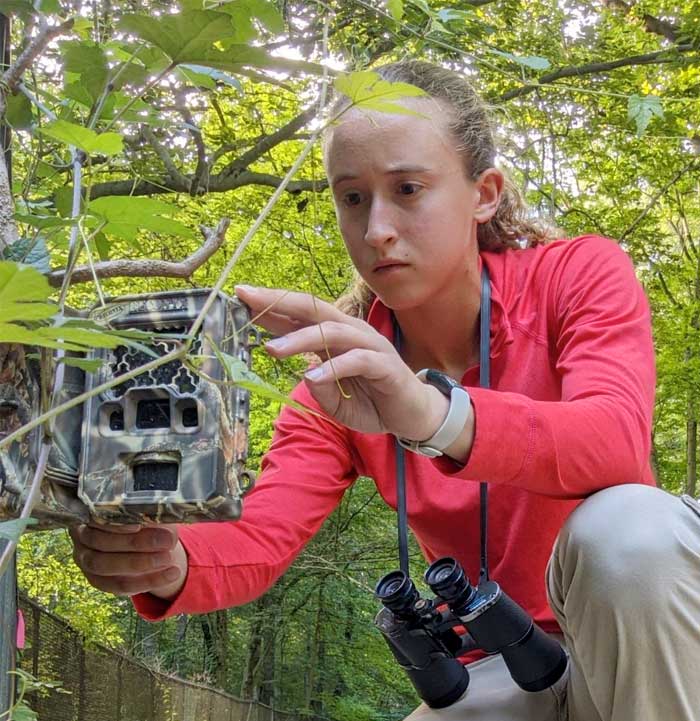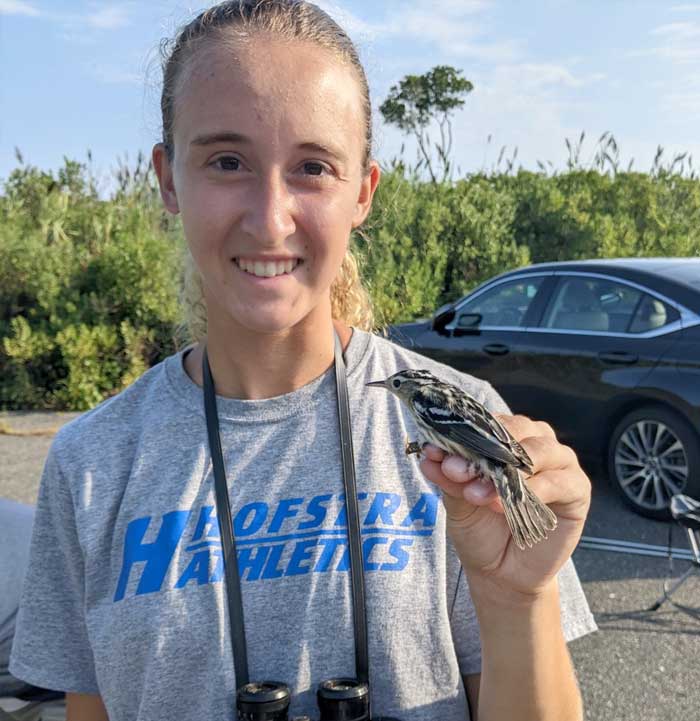Biology Major
Karissa Hough ‘24
When she’s not playing for the Pride on Hofstra’s Field Hockey team, biology major Karissa Hough ‘24 has dedicated herself to studying some of nature’s tiniest creatures. According to her faculty advisor, Biology Professor Russell Burke, Hough is breaking ground in the scientific community with her research of leaf miners.

Averaging less than 2 mm in length, leaf miners are an important part of the ecosystem as prey for other small invertebrates. Hough explains these insects spend their larval stage living on and eating the leaf tissue of plants. The patterns of waste they leave behind serve as a unique signature that scientists use to identify each distinct species, and are often surprisingly beautiful.
The types of leaf miners that make their home on Long Island and throughout New York state had not been documented until Hough and her mentor, Nassau County naturalist Stephane Perreault, began working together this past summer. To date, they have catalogued 76 species that live among 66 host plants in northern Nassau County. These include approximately 40 families of moths, 10 families of flies and six families of beetles.
Because there has been so little research on leaf miners, Professor Burke says Hough’s work is important scientific news.
Because there has been so little research on leaf miners, Professor Burke says Hough’s work is important scientific news. What they find most remarkable is that leaf miners appear to have preferred host plants – and they seem to have a particular affinity for the American chestnut and other chestnut species.
“The American chestnut is interesting because during the 20th century this formerly abundant and valuable tree was almost wiped out from a fungal blight,” says Hough. This blight continues to kill the above-ground portion of chestnut trees. When the roots survive, new sprouts can grow to 15 feet tall before succumbing to the fungus. “With the disappearance of the American chestnut,” Hough says, “we were interested to find out if leaf miners were using the saplings as hosts and if they were seeking out other chestnut species or hybrids.”
Hough has also been collecting data for the New York State Breeding Bird Survey. At a nature sanctuary in northern Nassau County, she located nests and watched for bird breeding behavior, which how they build their nests, carry food and feed their young. Hough even learned to identify the different songs of the birds in the area. She entered the locations of these behavioral observations into GIS and monitored the bird territories. She says, “I collected data on about 35 bird species such as yellow warblers, wood thrush, and cardinals.”


